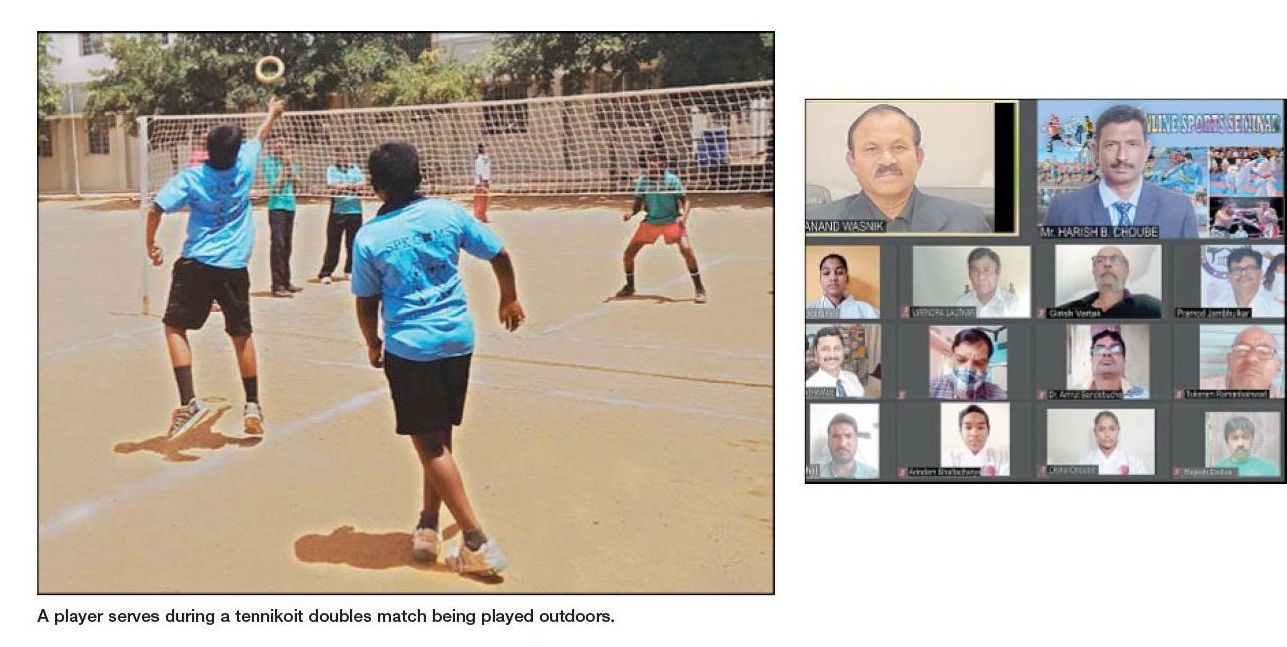Tennikoit popular in Germany, SA, Brazil and sub-continent: Wasnik
Date :14-May-2021

Sports Reporter :
BASICALLY a recreation sport, tennikoit is played in fourteen countries and is quite popular in Germany, South Africa, Brazil and sub-continental countries including India, Pakistan and Bangladesh, said Anand Wasnik during a webinar. In the 28th session of seminar ‘Karate and Sports Seminar for Physical and Spiritual Development of Sportspersons’, Wasnik, International Referee of Tennikoit and Ex-Member of Maharashtra Tennikoit Association, was the guest speaker. The series of seminars is being organised by Karate Budokan International (Vidarbha Region) with Kyoshi Harish B Choube, (Black Belt 7th Dan) National Chief Instructor, Examiner Karate Budokan International and Sports Co-ordinator, being the host. Wasnik informed in detail about the sport.
“Tennikoit, also called ring tennis or tenniquoits, is game played on a tennis-style court, with a circular rubber ring hurled over a net separating the two players, with each trying to catch and return the ring thrown into the opponent’s court. The game is played in 14 countries. It is particularly popular in Germany, South Africa, Brazil, and the subcontinent nations of India, Pakistan, and Bangladesh. “The origins of tennikoit are unclear. Some sources claim that it was founded in Germany. But a more immediate ancestor of the game is likely the game of deck tennis, a recreation commonly played on cruise ships at the start of the 20th century, on smaller versions of tennis courts, with rings or rubber or another soft material,” Wasnik informed the participants. On how the game is actually played, Wasnik said, “The game begins as one player serves the ring upwards over the net, diagonally into the opponents court, and the opponent tries to catch the ring before it can land in their court, and if so throw it back. Each player takes five services in a row, regardless of whether they have scored points for a serve, and then the opponent serves for the following five turns. “Each individual (or the pair in case of a doubles match) tries to score 21 points in order to be declared a winner, but the winner must maintain a lead of two points over the opponent to win.
A game consists of three sets of 21 points; the winner of two sets wins the match. However, a time limit of 30 minute is in place per set. Thus a server should win a point within nine rallies; failing to do so will then result in a point for one’s opponent.” It is one of those sports that can be played either indoors or outdoors. “Tennikoit can be played indoors or outside, on any surface which includes red sand, clay, and cement. Courts measure 12.2 by 5.5 metres, regardless of playing singles or doubles, and are divided by a centre line. Each playing zone is 5.2 by 2.75 metres. The height of the net that divides the court another direction is 1.8 metres. The game may be played in singles (one player per side) or doubles (a pair per side),” he explained. On the fouls committed during a match, Wasnik said, “Faults include a koit hitting the net posts, leaving the court entirely (even if it eventually lands in the court) or striking or passing through the net, as well as wobbling or shaking of the koit.” The programme concluded with a interactive question and answer session. A vote of thanks was proposed by Renshi Karunkumar of Karate Budokan International.